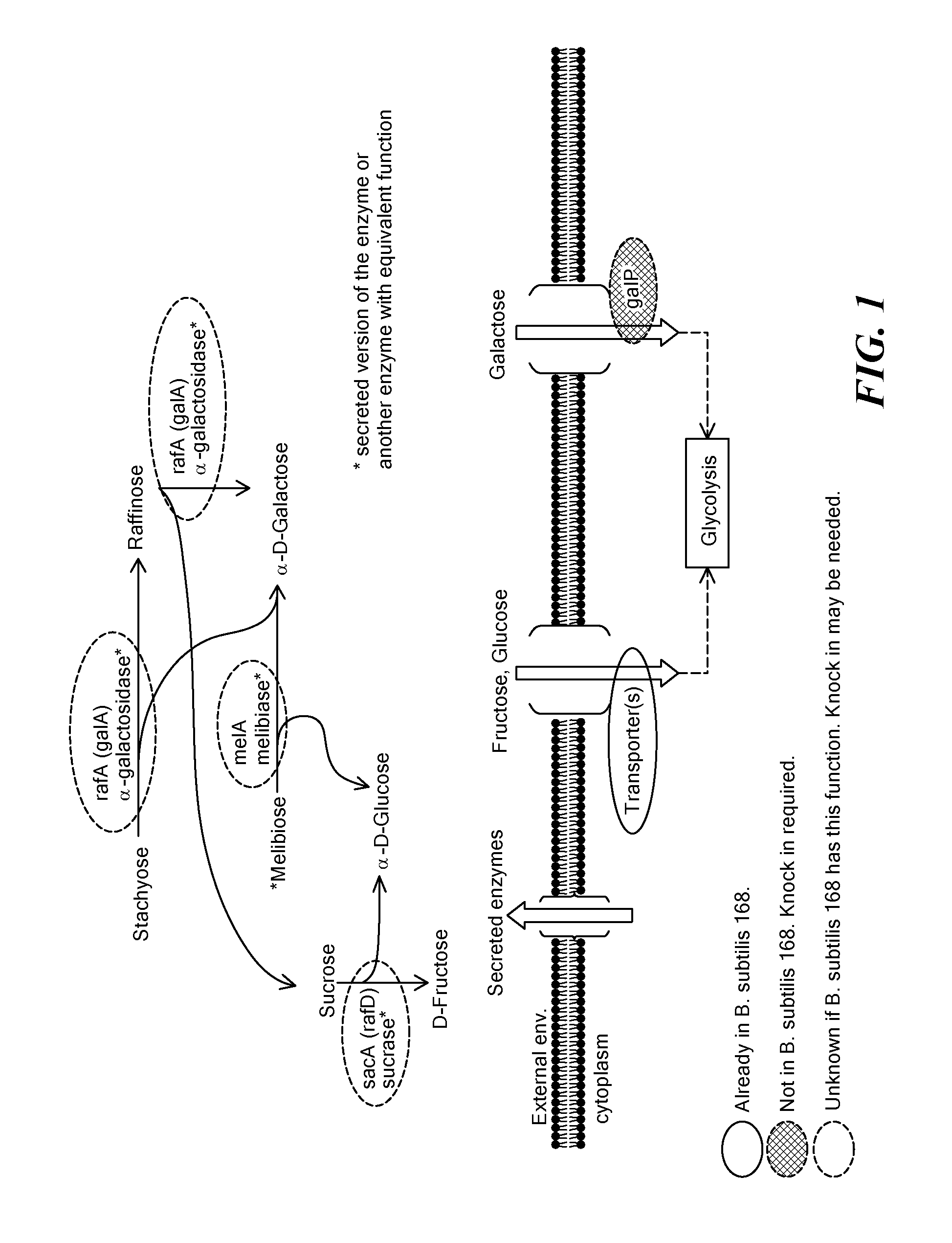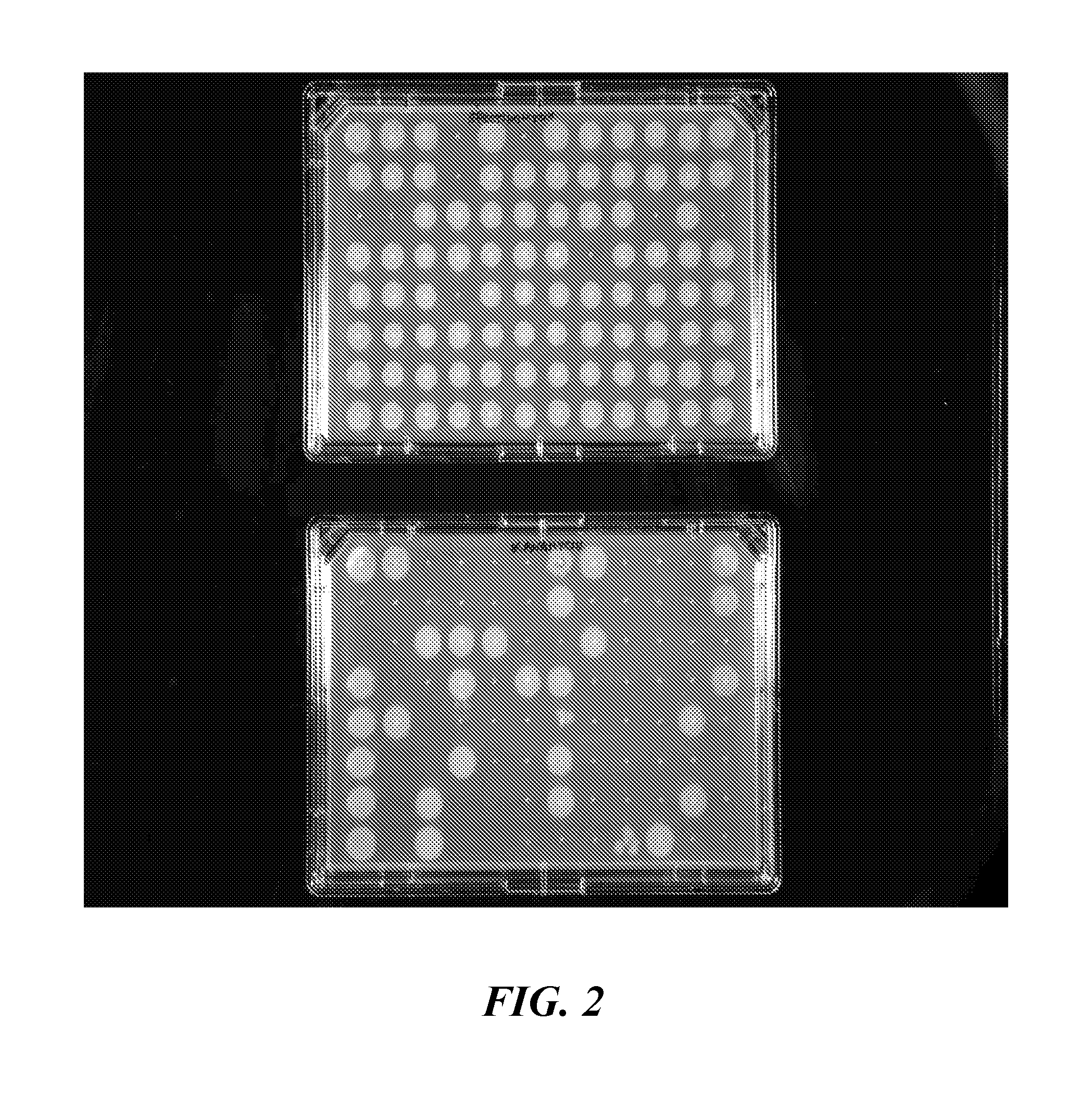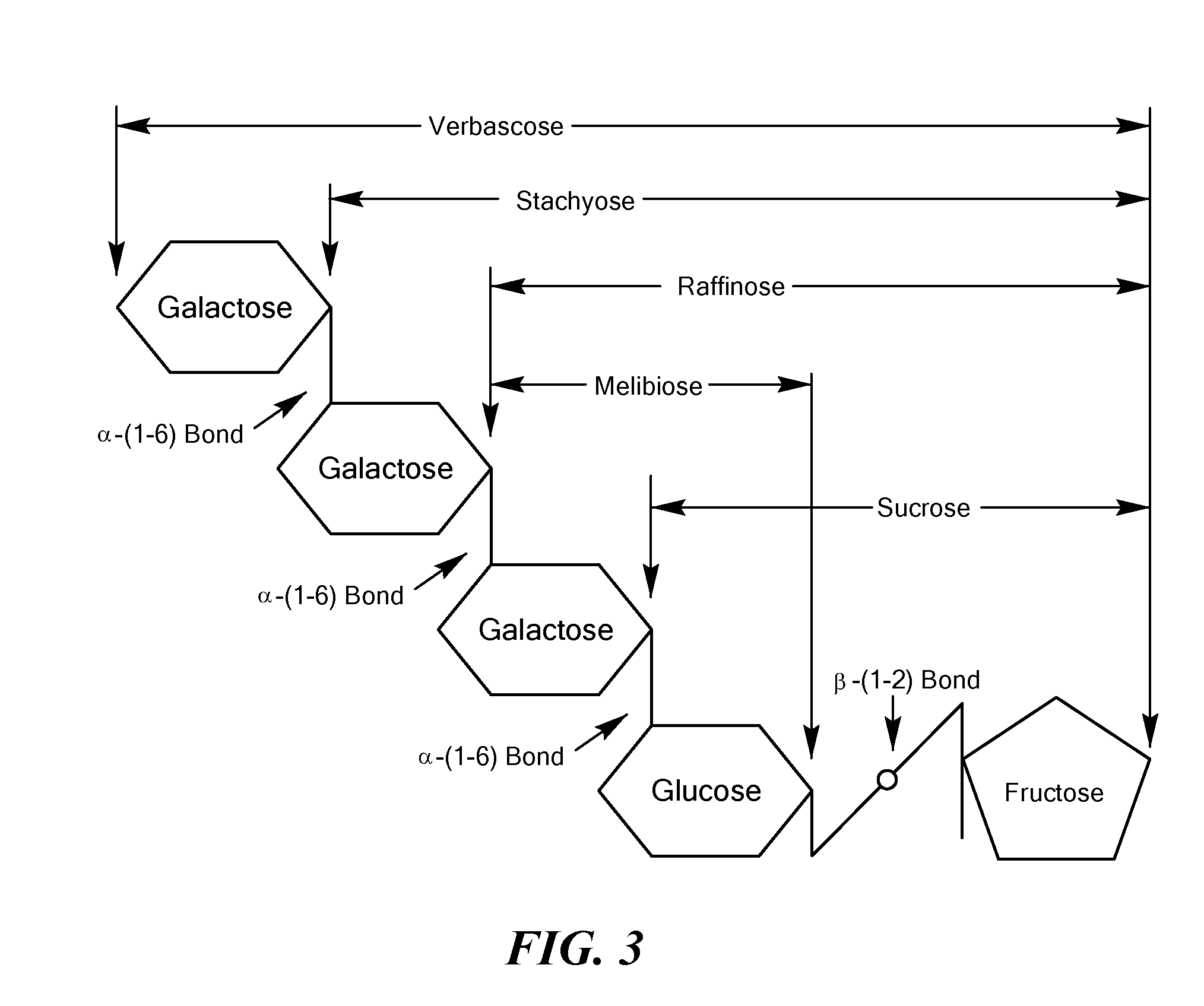Engineered microorganisms and methods of use
a technology of microorganisms and microorganisms, applied in the field of engineered microorganisms and methods of use, can solve the problems of gastrointestinal distress in livestock and humans, and achieve the effect of efficiently converting soy carbohydrates and efficient utilization of soy components
- Summary
- Abstract
- Description
- Claims
- Application Information
AI Technical Summary
Benefits of technology
Problems solved by technology
Method used
Image
Examples
example 1
Engineering of B. subtilis to Overexpress Certain Glycosidases
[0088]The present example describes one exemplary strategy for engineering microorganisms such as B. subtilis for more efficient utilization of soy carbohydrates (FIG. 8). The putative melibiase enzyme of Bacillus subtilis, encoded by the melA gene, putatively capable of hydrolyzing the α-1-6 links specifically in the disaccharide melibiose, can be used to cleave the galactose-glucose linkages in melibiose, stachyose and raffinose (Oh Y K et al, J. Biol. Chem., 2007, 282(39): 28791-28799. http: / / www.jbc.org / cgi / content / full / 282 / 39 / 28791). To examine its activity, this putative melibiase enzyme is overexpressed, purified and assayed on the three sugars in vitro.
[0089]B. subtilis is engineered to overexpress melibiase using methods we have previously described. (See, e.g., Fabret et al. (2002) “A new mutation delivery system for genome-scale approaches in Bacillus subtilis”, Mol. Microbiol., 46:25-36 and International Paten...
example 2
Conditions for Submerged Fermentation of B. subtilis
[0091]In the present Example, strains of B. subtilis were grown and fermented using soy carbon sources according to a liquid growth (“submerged”) protocol for production of FA-Glu and of surfactin.
[0092]Cultures were grown in liquid volumes ranging from 10 mL in 50 mL conical tubes, 50 mL in 250 mL E-flasks, 500 mL in 2 L E-flasks and 8 L in 12 L benchtop fermenters. Liquid media used were variants of either MM15 or S7 (recipes below) with a variety of carbon sources including soy products and cellulosic intermediates. Strains of interest were generally grown to saturation in M9YE media and then seeded at 2% into medium formulation. Fermentation cultures were grown at either 30° C. or 37° C. with agitation for 3-5 days. Liquid samples were removed, insoluble materials were removed, and material were analyzed and quantified via LCMS.
Media Compositions
[0093]
M9YE6gNa2HPO43gKH2PO40.5gNaCl1gNH4Cl3gYeast Extract0.5% GlucoseMM152gAmmoniu...
example 3
Conditions for Solid State Fermentation of B. subtilis
[0097]In the present Example, engineered strains of B. subtilis were grown and fermented using soy carbon sources according to a variety of solid state fermentation (SSF) protocols in order to optimize conditions for fermentation and production of products of interest. Solid state fermentation may allow reductions in the time and resources used to ferment large quantities of B. subtilis.
[0098]Ground soybean hulls were autoclaved either dry or with varying amounts of water, and varying concentrations of S7 components and cells were added after autoclaving. In some conditions cell growth was observed on the surface of this “tray” fermentation after about 48-72 hours growth without agitation. Growth is observed by a whitish cell color and a purple haze that tends to accompany surfactant production. Cell growth is typically observed at the solid-air interface, therefore a very uniform thin layer of soy hull and cells may be desirab...
PUM
| Property | Measurement | Unit |
|---|---|---|
| mass | aaaaa | aaaaa |
| surface tension | aaaaa | aaaaa |
| volumes | aaaaa | aaaaa |
Abstract
Description
Claims
Application Information
 Login to View More
Login to View More - R&D
- Intellectual Property
- Life Sciences
- Materials
- Tech Scout
- Unparalleled Data Quality
- Higher Quality Content
- 60% Fewer Hallucinations
Browse by: Latest US Patents, China's latest patents, Technical Efficacy Thesaurus, Application Domain, Technology Topic, Popular Technical Reports.
© 2025 PatSnap. All rights reserved.Legal|Privacy policy|Modern Slavery Act Transparency Statement|Sitemap|About US| Contact US: help@patsnap.com



